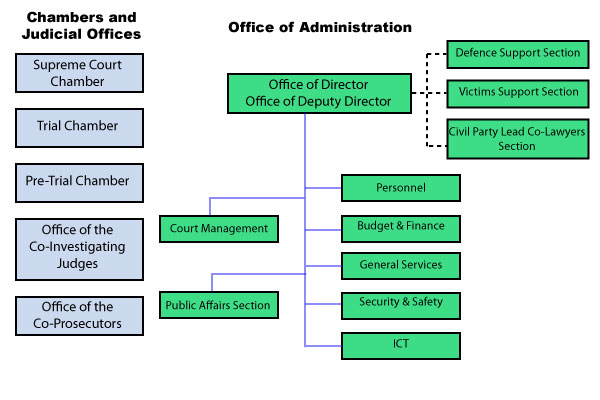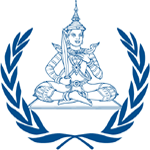The Extraordinary Chambers in the Courts of Cambodia (ECCC) is a special Cambodian court which receives international assistance through the United Nations Assistance to the Khmer Rouge Trials (UNAKRT). The court is also informally known as the Khmer Rouge Tribunal or the Cambodia Tribunal.
- Factsheet: ECCC at a glance
- Summary of contributions and expenditure as of 30 September 2017
- Outreach statistics as of September 2017
The Khmer Rouge regime took power on 17 April 1975 and was overthrown on 7 January 1979. At least 1.7 million people are believed to have died from starvation, torture, execution and forced labour during this period of 3 years, 8 months and 20 days. The end of the Khmer Rouge period was followed by a civil war. That war finally ended in 1998 when the Khmer Rouge political and military structures were dismantled.
In 1997, the government requested the United Nations to assist in establishing a trial to prosecute the senior leaders of the Khmer Rouge. In 2001, the Cambodian National Assembly passed a law to create a court to try serious crimes committed during the Khmer Rouge period (1975-1979). This court is called the Extraordinary Chambers in the Courts of Cambodia for the Prosecution of Crimes Committed during the Period of Democratic Kampuchea. The government of Cambodia insisted that, for the sake of the Cambodian people, the trial should be held in Cambodia using Cambodian staff and judges together with foreign personnel. The government of Cambodia invited international participation due to the weakness of the Cambodian legal system and the international nature of the crimes, as well as for assistance in meeting international standards of justice.
An agreement with the United Nations, detailing how the international community would assist and participate in the Extraordinary Chambers, was ultimately reached in June 2003. While this special court was created by the Cambodian government and the United Nations, it is independent of them. It is a Cambodian court with international participation that applies international standards.
The court can only prosecute two categories of alleged perpetrators for alleged crimes committed between 17 April 1975 and 6 January 1979:
1) Senior leaders of Democratic Kampuchea; and
2) Those believed to be most responsible for grave violations of national and international law.
The Cases at the ECCC are:
Case 001:
Defendant: Kaing Guek Eav alias Duch
Case 002 (Severed into Case 002/01 and Case 002/02):
Defendants: Khieu Samphan, Nuon Chea, Ieng Sary (deceased) and Ieng Thirith (deceased)
Case 003:
Defendant: Meas Muth
Case 004 (Severed into Case 004/01, Case 004/02 and Case 004)
Defendants: Yim Tith (Case 004), Im Chaem (Case 004/01) and Ao An (Case 004/02)
The purpose of this website is to introduce you to the Extraordinary Chambers and answer some of the questions people commonly ask about the trials. Please contact the Public Affairs Section if you need more specific information or would like to arrange a visit to the ECCC.


The emblem represents the Extraordinary Chambers by combining a depiction of the administration of justice in Cambodia during the ancient period of Angkor with the United Nations wreath of olive branches symbolising peace. The official colour is dark blue.